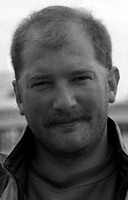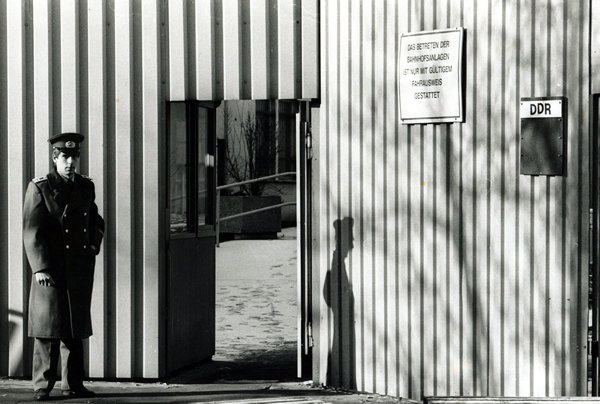Amazing
scenes as sinister symbol of communist oppression is opened

"Hearing
of the events in Berlin I flew in to the city from my base
in London. I'd grown up in the shadow of the Cold War and
to be a witness to this momentous piece of history was thrilling."
- Richard
Moore
President
Reagan's call to Gorbachev
"We
welcome change and openness; for we believe that freedom
and security go together, that the advance of human
liberty can only strengthen the cause of world peace.
"There
is one sign the Soviets can make that would be unmistakable,
that would advance dramatically the cause of freedom
and peace.
"General
Secretary Gorbachev, if you seek peace, if you seek
prosperity for the Soviet Union and eastern Europe,
if you seek liberalisation, come here to this gate.
"Mr
Gorbachev, open this gate. Mr Gorbachev, tear down this
wall!"
|
|

After
World War II Europe was divided between Western and communist spheres
of influence and militarily by Nato (Western Europe and the United
States) and the Warsaw Pact (East Germany, Poland, Czechoslovakia,
Hungary, Bulgaria, Romania and the Soviet Union.)
Berlin,
deep inside East Germany, was also divided and run by the occupying
powers of the US, Britain and France, on the Western side and the
Soviet Union on the eastern.
In
1961 the Soviets and East Germany tightened their grip on the city
by building The Berlin Wall.
It
was a massive operation. The wall was 3.6 metres high, 106 kilometres
long and had guard towers, barbed wire and other "defences".
The
communists said it was to keep fascists out but, in reality, it
was to keep East Germans from fleeing to the West. Many East Germans
tried to escape over the wall and while 5000 succeeded up to 200
died doing so.
The
last person to be shot and killed while trying to cross the border
was Chris Gueffroy on February 6, 1989.
In
a speech at the Brandenburg Gate on June 12, 1987, US President
Ronald Reagan challenged Mikhail Gorbachev, then the Soviet leader
and champion of Glasnost, or "Openness", to tear down
the wall as a symbol of increasing freedom in the Eastern Bloc.
In 1989, a politically stunning series of events occurred. It became
known as the Autumn of the Nations as one by one the communist nations
of Central and Eastern Europe overthrew their governments.
It
began in Poland and continued in Hungary, Bulgaria, Czechoslovakia
and Romania. In East Germany weeks of civil unrest ended on November
9 when the communist government announced all its citizens could visit West Germany and West Berlin.
Within
a year Germany was re-unified after more than 40 years as divided,
occupied country.
-
Richard Moore
|